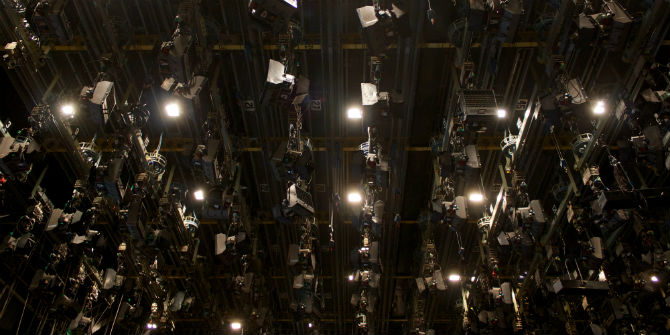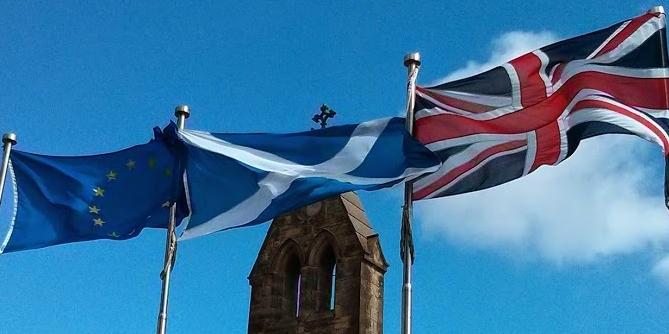 In this two part series, University of Glasgow Professor and Visiting Professor at LSE Philip Schlesinger, comments on the white paper on independence put forth by the Scottish Government. In this first post he explains the context of the proposals for the broadcasting and communications in Scotland’s Future, suggesting that even without independence, they can be a basis for negotiations on devolution.
In this two part series, University of Glasgow Professor and Visiting Professor at LSE Philip Schlesinger, comments on the white paper on independence put forth by the Scottish Government. In this first post he explains the context of the proposals for the broadcasting and communications in Scotland’s Future, suggesting that even without independence, they can be a basis for negotiations on devolution.
On 26 November, the Scottish Government published its blueprint for independence, Scotland’s Future. This long mooted ‘White Paper’ marks a new stage in the debate prior to the referendum on independence, due on 18 September 2014.
The Scottish Government has now set out its stall and we can expect the campaign on both sides – the unionist Better Together and the secessionist Yes Scotland – to debate the strengths and weaknesses of this lengthy document.
The ten chapters and lengthy Q&A cover all the main planks of the SNP’s case. Chapter 9 entitled Culture, Communications and Digital is what will interest readers of this blog. The headline proposals are to set up a publicly funded Scottish Broadcasting Service (SBS), working as a joint venture with the BBC, and at the very least to co-regulate telecommunications. I shall restrict my comments to these two issues.[1]
Questions about reform of broadcasting have been on the Scottish agenda since 2007, when the first SNP government took power. Its main vehicle for pursuing the case, The Scottish Broadcasting Commission, finally reported in 2008.
As already signalled in the LSE media policy blog earlier this year, a challenge to sole UK powers over communications regulation has come increasingly into focus. The Scottish Government has latterly identified communications and posts as objects of post-independence regulation in Scotland.
A wager in uncertain times
Before we discuss the key policies, it’s worth asking how to interpret the Scotland’s Future as a whole. Long-awaited by a segment of the policy community UK-wide, much of the political commentariat and especially the interested citizenry of Scotland, the new proposals see light of day after considerable, often acrimonious, debate has already taken place, most rather specialist but occasionally erupting into mainstream media attention. Those expecting Scotland’s Future to offer definite answers will be disappointed. It is really about placing bargaining chips on the political gaming table in an uncertain electoral landscape. It also covers some bases for the possibility of enhanced devolution, otherwise known as ‘devo-max’.
Consider this sequence of events. First comes the European parliamentary election in May 2014 quickly followed by the Scottish independence referendum in September 2014. The Coalition will still be in power at Westminster and will be the main interlocutor for the Scottish Government, whatever the referendum’s outcome. Next comes the UK general election in May 2015, and perhaps a change of UK government. This will be followed by the Scottish parliamentary election of May 2016, with the SNP presently looking likely to retain power.
If Scots do vote for independence next September, the Scottish Government has said that independence would be declared in March 2016.
Proposals for independence or ‘devo-max’
Scotland’s Future, then, is first a set of proposals across the whole policy spectrum that aims to persuade the Scottish electorate to take the independence plunge. Second, it is intended to provoke the unionist camp into disclosing its hand on contentious negotiating matters, which is unlikely to happen. And third – and this is crucial – it also offers a fall-back in the event of a ‘no’ to independence. It sets out the stall for the transfer of more powers to Scotland, which might win support in Scotland, were the presently undefined stage of ‘devo-max’ within the UK to become the agreed option. Scotland’s Future is not only a view of what an independent state might look like, but also a precursor to the SNP’s 2016 election manifesto.
The new regime proposed for broadcasting, communications and regulation, has been more reported on than interrogated in the mainstream media. Those who want depth should seek it in the specialist policy literature.
Media analyst Alice Enders has questioned the broadcasting and telecommunications proposals.[2] “The big ask”, she says, “is BBC One and BBC Two on free-to-air terms, implying a subsidy of £270 million to Scotland. This seems very unlikely to be agreed by the rest of the UK (rUK)”. As for telecommunications, she considers that the proposals imply “a discontinuity in existing UK-wide 3G and 4G licenses attributed by Ofcom”.
Academic and consultant Ewan Sutherland in a more detailed paper has raised far-reaching questions about the Scottish Government’s timetable for legislative and regulatory change as well as constitutional issues, not least in relation to the EU. It would be good to see these issues thoroughly debated, which may happen now that the cards are on the table. Continued in Part 2.
This blog post gives the views of the author, and does not represent the position of the LSE Media Policy Project blog, nor of the London School of Economics.
[1] Other issues addressed include a SNP manifesto pledge for 2016 to renationalise Royal Mail in Scotland, continued commitment to the National Lottery, and proposals for Post Office Ltd.
[2] Alice Enders, Scotland Independence: Media and Telecoms, Enders Analysis, 29 November 2013 (2013-105), 8pp is behind a paywall, abstract available.





